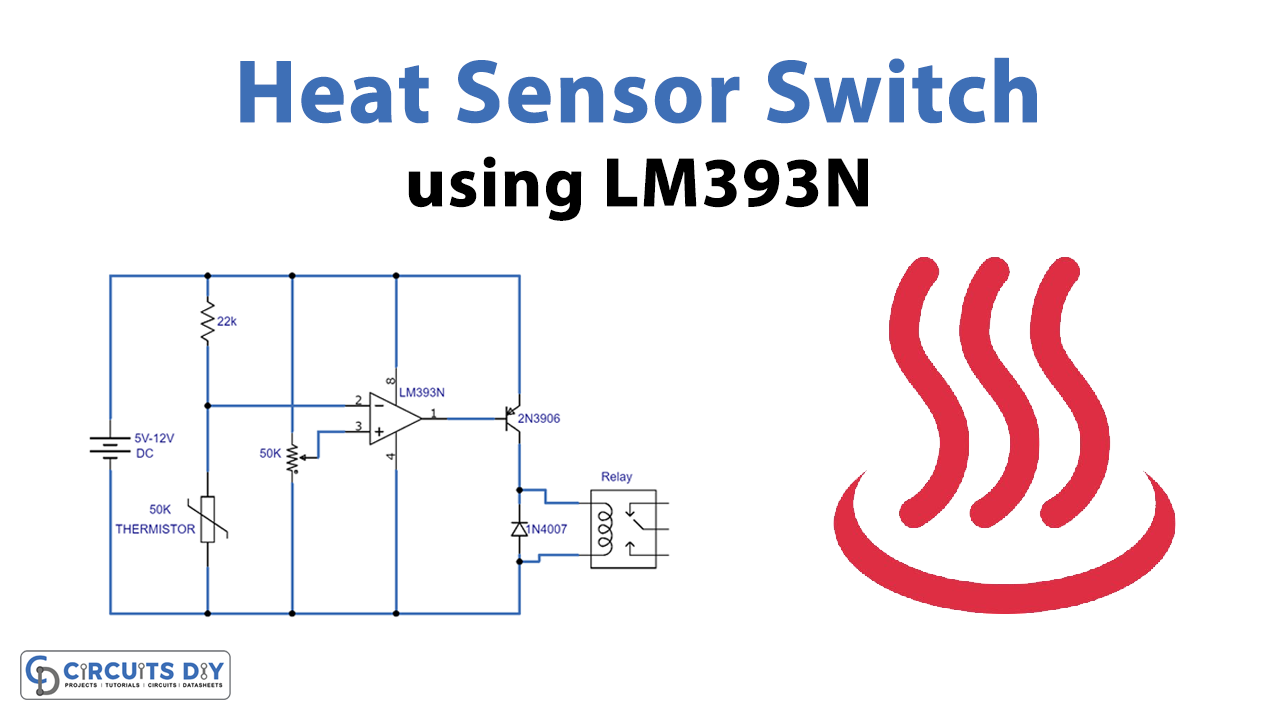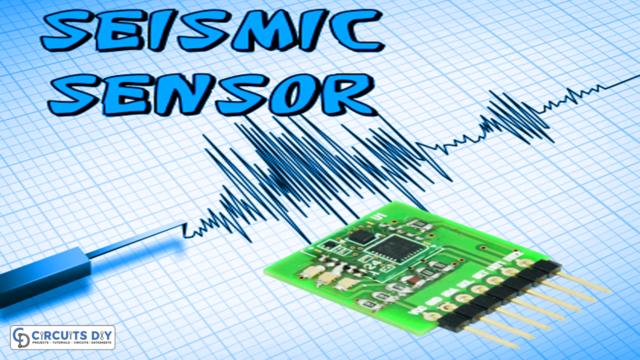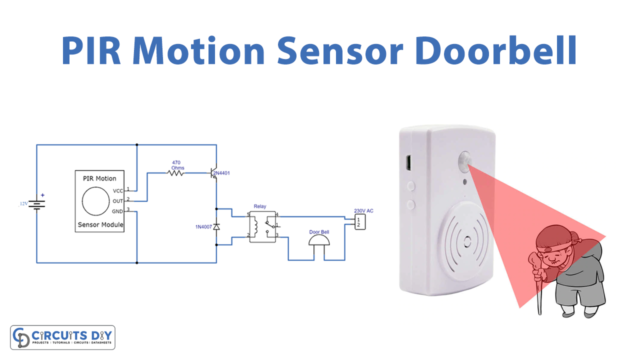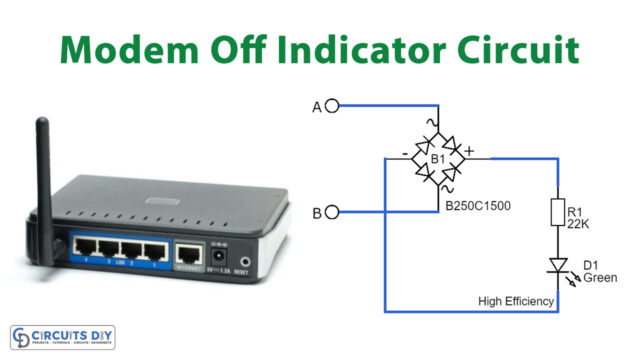Here is another temperature sensor project, in this circuit we are making a simple heat sensor switch using LM393N IC. LM393N IC is a dual voltage comparator IC with a lot of built-in features like low power consumption, a wide range of operating voltage from 2 to 36 volts DC, high gain, wide bandwidth, etc. due to the low power consumption, the circuit can be suitable to be operated with batteries and are portable.
We have used a relay switch at the output of this circuit so that you can connect any AC or DC equipment and control or operate it at the desired temperature.
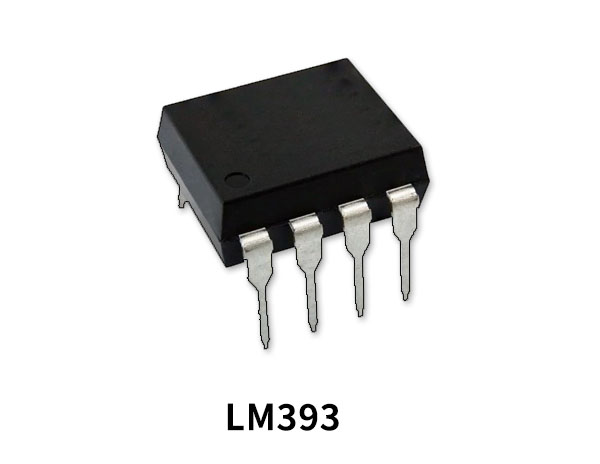
Hardware Components
The following components are required to make Heat Sensor Switch Circuit
| S.no | Component | Value | Qty |
|---|---|---|---|
| 1. | Input Supply DC | 5-12V | 1 |
| 2. | IC | LM393 | 1 |
| 3. | Transistor | 2N3906 | 1 |
| 4. | Thermistor | 50KΩ | 1 |
| 5. | Resistor | 22KΩ | 1 |
| 6. | Variable resistor | 50KΩ | 1 |
| 7. | Relay | – | 1 |
| 8. | Diode | 1N4007 | 1 |
LM393 Pinout

For a detailed description of pinout, dimension features, and specifications download the datasheet of LM393
Heat Sensor Switch Circuit

Working Explanation
The operating voltage of this circuit is 5-12V DC. A thermistor is used in this circuit to detect the heat, a thermistor is a device whose resistance is inversely proportional to the temperature around it. So when the heat will rise above the preset level the resistance of the thermistor will be decreased completely and it will let the current flow through the circuit. The IC will be activated and it will activate the transistor which is acting as a switch for the relay. Any equipment connected to the relay will now be activated as well.
The relay used in this circuit must have the same voltage as the operating voltage. The sensitivity or the desired level of temperature at which you want the circuit to activate is adjusted with the 50K variable resistor. You can do some experiments with this circuit by using different values of thermistors and resistors to further enhance the sensitivity of the circuit or you can modify it into a cold sensor circuit too.
Applications and Uses
- Fans
- Electronic devices
- Lights, lamps, etc.
- Heat sensing alarms
- Fire alarms

